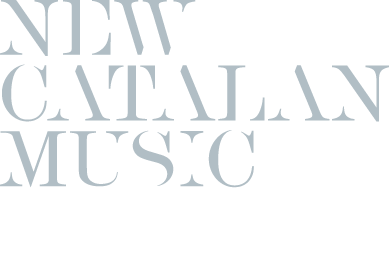Search
Contemporary music
Contemporary music in Catalonia is living a moment of intense creativity. Despite the ongoing difficulties of easily placing today’s musical scores into concert circuits, a wide range of composers are not only covering very different languages and styles but also building a fertile ground for creativity. These musicians are in permanent dialogue with the rest of European creation, which only gets richer everyday due to the reinvigorating contribution of the new generations.
This promising reality, however, did not just arise over recent decades. Ever since the time of the Art Antiqua, music has been one of the main cultural manifestations in Catalonia, which has found in it not only an expression of identity but also a tool for integration and cohesion with Europe. Over time, figures like Mateu Fletxa, Domènec Terradellas, Antonio Soler and Ferran Sors reached far beyond Catalonian borders and inscribed their music in the universal history of music.
It is not strange then that, come the 20th century, Catalonia was well open to receiving new ideas from the European musical avant-gardes. The road to modernity had already been paved by the Tortosa-born Felip Pedrell, father of a Spanish nationalist school whose most important representatives were Isaac Albéniz and Enric Granados (Catalonia), Joaquín Turina (Seville) and Manuel de Falla (Cádiz). In addition, figures like Robert Gerhard and Pau Casals enlivened the Catalan musical scene early last century. Also noteworthy, Arnold Schönberg stayed for a few months in Barcelona, a city that in 1936 turned into a European musical capital by hosting the XIV Festival de la Societat Internacional de Música Contemporània (SIMC), which included the premiere of Alban Berg’s Concert per a violí.
The Spanish Civil War would inevitably put a detrimental pause to the music scene in Catalonia. Despite the forced exile of some of its most important figures and the darkness of the following years, Catalan music would continue evolving and expanding until reaching the splendour it finds itself in today. There is a whole universe of creators, unaffiliated to specific schools or tendencies, who feed from the classical tradition as much as they do from popular refreshing sounds, including flamenco, traditional Catalan music or sounds from the Mediterranean –all of which leads to a particular and very distinct style in its own. This wonderful reality is characterized by its adoption of a wide range of forms, from opera all the way to electro-acoustic creation, choral music to big symphonic scores. Also, to name just a few examples, it also features the wise and outstanding talent of Joan Guinjoan, the experimental language of the ever innovative composer Hèctor Parra, the splendid and renown creative maturity of Benet Casablancas to the refined aesthetic of the younger Ramon Humet.
Up until now, however, this rich panorama was lacking the tools that would give it easier access and recognition. The first attempt in this sense came in 2007 with the publication, suggested by the Fundació Caixa Catalunya, of the compilation Composers Today. Guide to Contemporary Music in Catalunya, which brought proof to the existence of a creative universe of astounding dimension. Now, as part of the institutional initiative to identify and promote the Catalonia’s musical heritage, the Institut Ramon Llull has gathered a testimony to this initiative and has presented New Catalan Music, a website that gives updates and ease to those contents in order to offer an online portrait of Catalan creation in permanent transformation and growth.
And with this website, our goal is to provide creators, programmers, performers and fans an efficient tool that gives access to the work of the composers that live and work in Catalonia and in this way, help Catalan contemporary music make a great place for itself in the international spectrum, joining stable prestigious programming and the repertoire of well-known international groups. Above all, the goal is to promote the knowledge and diffusion of one of the signs of identity that most represent a society ever open to the world and to culture.


 twitter
twitter flickr
flickr facebook
facebook RSS
RSS spotify
spotify youtube
youtube
